How To Shift SRAM Grip Shifters!
Shifting (also called changing gears) is the secret to riding comfortably and efficiently whether you're climbing and descending, sailing along flat stretches with
| ||
| Shifting the right Grip Shifter (see the 6 illustrations below) controls the rear derailleur and moves the chain onto the different cogs in the rear. You twist it forward and backward as follows: | ||
| The right shifter operates the rear derailleur. When you're just riding along, your hand rests on the grip with the inside of your hand naturally holding the Grip Shifter, which you twist backward and forward to shift. | 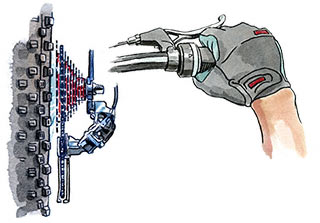 | |
| When you feel like it's too hard to pedal and want to shift into an easier gear, you twist the shifter back. It clicks as you twist and the action moves the rear derailleur, which in turn shifts the chain onto the next larger rear cog making it easier to pedal. You can twist the lever a little to shift one gear or twist it more to shift over several gears, depending on what gear you need for the conditions. | 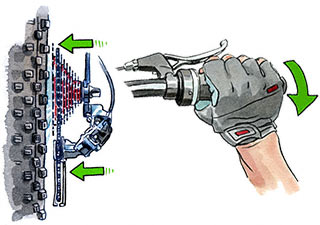 | |
| When you feel like it's too easy to pedal and you'd like a harder gear, you twist the shifter forward. It clicks as you twist and the action moves the rear derailleur, which in turn shifts the chain onto the next smaller rear cog making it harder to pedal. You can twist the lever a little to shift one gear or twist it more to shift over several gears, depending on what gear you need for the conditions. | 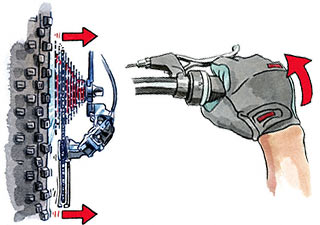 | |
Shifting the left shifter (see the 6 illustrations below) controls the front derailleur and moves the chain onto the different chainrings. You twist it forward and backward as follows: | ||
| The left shifter operates the front derailleur. When you're just riding along, your hand rests on the grip with the inside of your hand naturally holding the Grip Shifter, which you twist backward and forward to shift. | 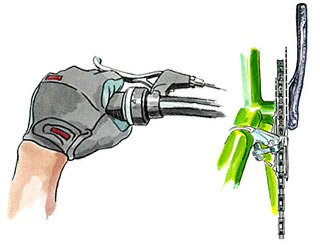 | |
| When you need to make it a lot harder to pedal (as you will when you crest a hill and start going a lot faster down the other side), you twist back on the shifter, which moves the front derailleur outward shifting the chain onto a larger chainring making the bike a good bit harder to pedal. | 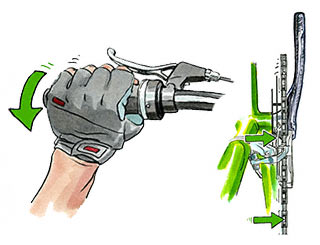 | |
| When you need to make it a lot easier to pedal (as you will when you come to uphills), twisting forward on the shifter, shifts the front derailleur inward moving the chain onto a smaller chainring, which makes it a lot easier to pedal the bike. | 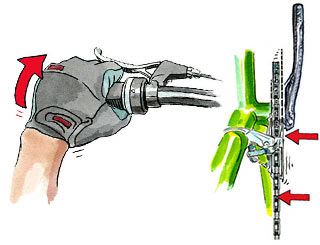 | |
| That's all there is to it! Now, with a little practice you'll be shifting up a storm and having more fun than ever. Remember, if you have any questions about shifting or anything else cycling, just drop by. We're always happy to help! And, please keep in mind, that if your derailleurs are out of adjustment and your bicycle isn't shifting properly any more we're happy to help you with the problem and get your bike shifting like a champ again. Just let us know. Thanks! | ||

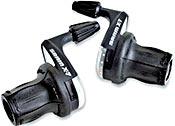 glorious tailwinds, pedaling for pleasure or going for glory. And today bicycles are easier, more efficient and more fun to shift than ever thanks to modern shifters that let you change gears almost as fast as the thought crosses your mind. And you never even need to move your hands from the handlebars!
glorious tailwinds, pedaling for pleasure or going for glory. And today bicycles are easier, more efficient and more fun to shift than ever thanks to modern shifters that let you change gears almost as fast as the thought crosses your mind. And you never even need to move your hands from the handlebars!